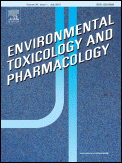
Environmental Toxicology and Pharmacology
Scope & Guideline
Bridging the gap between toxicology and pharmacology.
Introduction
Aims and Scopes
- Assessment of Environmental Contaminants:
Research focused on evaluating the toxicity of various environmental contaminants, including heavy metals, pesticides, and pharmaceuticals, on different biological systems. - Mechanistic Studies of Toxicity:
Investigation of the molecular and cellular mechanisms through which environmental toxins exert their effects, including studies on oxidative stress, inflammation, and apoptosis. - Ecotoxicology and Biodiversity:
Studies assessing the impact of pollutants on biodiversity, ecosystem health, and the responses of various species to environmental stressors. - Pharmacological Interactions with Environmental Agents:
Research exploring how environmental contaminants interact with pharmacological agents, potentially altering their efficacy and safety profiles. - Biomarkers of Exposure and Effect:
Development and validation of biomarkers to assess exposure to environmental toxins and their effects on health, providing tools for risk assessment and management. - Transgenerational and Developmental Toxicity:
Studies examining the long-term effects of environmental exposures on subsequent generations, particularly focusing on developmental toxicity.
Trending and Emerging
- Microplastics and Nanoplastics:
A significant increase in research addressing the environmental and health impacts of microplastics and nanoplastics, focusing on their toxicity, accumulation, and effects on aquatic life and ecosystems. - Pharmaceutical Contamination:
Emerging studies are increasingly examining the effects of pharmaceutical pollutants in the environment, including their bioaccumulation in aquatic systems and impacts on non-target organisms. - Endocrine Disruptors:
Growing interest in the mechanisms and effects of endocrine-disrupting chemicals (EDCs) on reproductive health, development, and long-term health outcomes, reflecting heightened awareness of their risks. - Epigenetics in Toxicology:
Research exploring the role of epigenetic modifications in mediating the effects of environmental toxins, indicating a shift towards understanding how environmental exposures can influence gene expression and health across generations. - Integrated Risk Assessment Approaches:
An increasing trend towards integrating various risk assessment methodologies, including ecological and human health assessments, to provide a more comprehensive understanding of environmental impacts. - Climate Change and Toxicology:
Investigations into how climate change interacts with toxicological processes and environmental contaminants, emphasizing the need to understand these dynamics in a changing world.
Declining or Waning
- Traditional Toxicology Models:
There has been a noticeable decline in studies relying solely on traditional toxicological models, as researchers increasingly favor more complex and ecologically relevant models that account for multi-species interactions and environmental variability. - Single Pollutant Studies:
Research focused exclusively on the effects of single pollutants is becoming less common, with a growing emphasis on studying mixtures and their combined effects on health and ecosystems. - Historical Contaminant Studies:
Research on legacy pollutants, such as certain persistent organic pollutants, is seeing less emphasis compared to newer contaminants, including microplastics and pharmaceuticals, which are now prioritized in environmental toxicology. - Standardized Laboratory Testing:
There is a decrease in the reliance on standardized laboratory testing protocols, as the field moves towards more field-relevant studies that incorporate real-world exposure scenarios.
Similar Journals

TOXICOLOGY
Delivering high-impact research for a toxicology-aware society.TOXICOLOGY, published by Elsevier Ireland Ltd, is a prestigious peer-reviewed journal specializing in the field of toxicology. With an ISSN of 0300-483X and an E-ISSN of 1879-3185, this journal provides a vital platform for researchers, professionals, and students to disseminate and access groundbreaking studies from 1973 to present, with a convergence set until 2024. Recognized for its high impact, it holds a Q1 ranking in Toxicology category and ranks #18 out of 133 in Scopus's sector of Pharmacology, Toxicology, and Pharmaceutics, placing it in the 86th percentile. While the journal is not open access, it nonetheless offers a rich collection of research articles that enhance the understanding of toxicological science and its applications. The journal's objectives encompass advancing knowledge in the toxicological evaluation of substances, promoting safety in public health, and fostering dialogue among scholars. As a key resource in the field, TOXICOLOGY plays a crucial role in advancing research and informing practices related to toxicological risks and safety assessments.
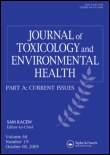
JOURNAL OF TOXICOLOGY AND ENVIRONMENTAL HEALTH-PART A-CURRENT ISSUES
Unraveling the Complexities of Toxicology and HealthJOURNAL OF TOXICOLOGY AND ENVIRONMENTAL HEALTH-PART A-CURRENT ISSUES, published by Taylor & Francis Inc, stands as a key resource in the interdisciplinary field of toxicology and environmental health. Operating under the ISSN 1528-7394 and E-ISSN 1087-2620, this journal maintains a strong presence with a Q2 category ranking in Health, Toxicology and Mutagenesis and a Q3 ranking in Toxicology as of 2023. It aims to disseminate critical findings that address contemporary issues in toxicology and environmental health, emphasizing the implications of environmental agents on human health. The journal offers both subscription and open access options, making cutting-edge research accessible to a diverse readership. With coverage of key topics from 1998 to 2024, it is an essential platform for academics, professionals, and students seeking to stay at the forefront of environmental health sciences.

CHEMICAL RESEARCH IN TOXICOLOGY
Bridging chemistry and toxicology for impactful solutions.Chemical Research in Toxicology is a premier journal published by the American Chemical Society, dedicated to advancing the understanding of toxicological effects associated with chemical substances. Since its inception in 1988, this esteemed journal has maintained a robust impact factor, ranking in the Q1 quartile for both Medicine (miscellaneous) and Toxicology as of 2023, reflecting its significance and influence in the fields of pharmacology and toxicology. With an impressive Scopus ranking at #16 out of 133 in the Toxicology category, it serves as a vital resource for researchers, professionals, and students seeking cutting-edge insights and scholarly articles that bridge the gap between chemistry and toxicological science. Although not an open-access publication, it continues to provide comprehensive analyses and original research that inform safe chemical practices and regulatory policies, further enhancing its role in public health and safety.

Journal of Environmental Science and Health Part C-Toxicology and Carcinogenesis
Connecting Environmental Science with Health OutcomesThe Journal of Environmental Science and Health Part C-Toxicology and Carcinogenesis is a vital publication in the fields of environmental science, toxicology, and cancer research, published by Taylor & Francis Inc. With an ISSN of 2689-6583 and E-ISSN 2689-6591, this journal provides a platform for peer-reviewed research that explores the intersection of environmental factors and health outcomes, particularly focusing on toxicological and carcinogenic impacts. Though it does not currently offer Open Access, it remains a significant contributor to academia with its current ranking in the Q4 category for Cancer Research and Q3 in Health, Toxicology and Mutagenesis. The journal has converged from 2020 to 2024 and aims to disseminate pioneering studies that inform public health policies and foster a deeper understanding of environmental toxins. Aspiring researchers, professionals, and students will find this journal to be an essential resource for the latest findings and discussions within these critical fields.
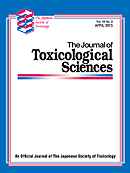
JOURNAL OF TOXICOLOGICAL SCIENCES
Innovative Insights into Toxicological ScienceThe Journal of Toxicological Sciences, published by the Japanese Society of Toxicological Sciences, is a prominent academic journal dedicated to the comprehensive study of toxicology and its related fields. Since its inception in 1976, the journal has provided a vital platform for researchers and professionals to disseminate innovative findings and insights in toxicology, with a focus on both experimental and clinical studies. Positioned in the Q3 quartile across various relevant categories, including Medicine (miscellaneous) and Toxicology as of 2023, the journal plays an essential role in advancing our understanding of toxic substances and their effects on biological systems. Although currently not open access, the journal maintains high academic standards and is indexed in Scopus, ranking #96 in Toxicology. Offering unique perspectives from Japan, it encourages global collaboration and discourse among toxicologists, making it an invaluable resource for students, researchers, and industry professionals alike.

JOURNAL OF APPLIED TOXICOLOGY
Elevating Standards in Toxicological ResearchJOURNAL OF APPLIED TOXICOLOGY, published by Wiley, stands as a leading platform in the field of toxicology, focusing on the rigorous examination of chemical substances and their effects on biological systems. With an impressive Impact Factor, it ranks in the top quartile (Q2) for toxicology journals, reflecting its esteemed position within the scientific community. The journal, identifiable by its ISSN 0260-437X and E-ISSN 1099-1263, has been an invaluable resource since its inception in 1981, and it continues to serve as a conduit for innovative research and practical applications through 2024. Positioned at the forefront of the field, it garners recognition in the Scopus Rankings, where it ranks #31 out of 133 journals in the toxicology category, placing it in the 77th percentile—a testament to its contribution to the advancement of pharmacology and toxicological sciences. While not an open-access journal, it remains accessible to a wide audience of researchers, professionals, and students eager to explore cutting-edge findings in applied toxicology, making it a pivotal resource for enhancing knowledge and fostering collaboration in the field.
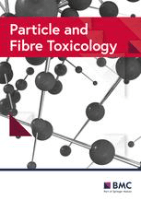
Particle and Fibre Toxicology
Exploring the intricate world of toxicology.Particle and Fibre Toxicology is a leading open-access journal dedicated to advancing the field of toxicology, specifically focusing on the health impacts of particulate matter and fibers. Published by BMC since 2004, this journal operates from its offices in the United Kingdom and has gained significant recognition in the scientific community, achieving an impressive impact factor that highlights its relevance and influence. As indicated by its Q1 ranking in various categories including Health, Toxicology and Mutagenesis and Medicine (miscellaneous), it occupies a prestigious position in the academic landscape, appealing to researchers, professionals, and students alike. With a Scopus ranking of #4 in Toxicology and #7 in Environmental Science, the journal ensures high visibility and accessibility, providing a platform for the dissemination of key research findings and innovative methodologies in the interdisciplinary domains of toxicology. Through its commitment to open access, Particle and Fibre Toxicology fosters knowledge-sharing and collaboration, facilitating significant advancements in our understanding of the toxicological effects of environmental agents.

Toxics
Pioneering research in toxicology and environmental health.Toxics is a leading international journal published by MDPI that has been dedicated to advancing the knowledge in the fields of toxicology, environmental health, and chemical safety since its inception in 2013. With an impressive Open Access model, it ensures that all research findings are readily available to a global audience, fostering collaboration and innovation across academia and industry. The journal is esteemed for its rigorous peer-review process and holds notable rankings, including Q1 status in Chemical Health and Safety and Q2 in both Health, Toxicology and Mutagenesis and Toxicology, reflecting its impact on critical research areas. Based in Basel, Switzerland, Toxics provides a platform for researchers, professionals, and students to disseminate significant findings on the implications of toxic substances in health and the environment, aiming to improve public health outcomes and inform regulatory decisions. With its ongoing commitment to high-quality research and relevant access options, Toxics continues to be an essential resource in the domain of toxicology and environmental sciences.
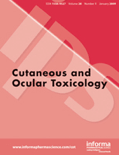
Cutaneous and Ocular Toxicology
Advancing knowledge on skin and eye toxicity.Cutaneous and Ocular Toxicology, published by Taylor & Francis Ltd, is an essential resource in the fields of toxicology and pharmacology, focusing specifically on the effects of substances on the skin and eyes. With an ISSN of 1556-9527 and an E-ISSN of 1556-9535, this journal has been a vital platform for disseminating research since its inception in 1982, continuing its contributions to the scientific community through to 2024. Recognized for its academic rigor, it currently holds a Q3 ranking in the Medicine (miscellaneous) and Toxicology categories, reflecting its value among researchers and practitioners. The open access option enhances the journal's visibility and allows wider dissemination of knowledge, making it a key resource for professionals, students, and researchers dedicated to understanding and mitigating toxicological effects. Situated in the United Kingdom, Cutaneous and Ocular Toxicology strives to foster interdisciplinary collaboration and elevate the standards of toxicological research.
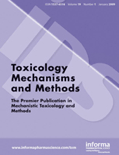
TOXICOLOGY MECHANISMS AND METHODS
Empowering researchers with cutting-edge toxicology studies.TOXICOLOGY MECHANISMS AND METHODS is a distinguished peer-reviewed journal dedicated to the advancement of toxicological research, published by Taylor & Francis Ltd. With its ISSN 1537-6516 and E-ISSN 1537-6524, this esteemed journal features critical studies and innovative methodologies in the field of toxicology, aligning with its mission to enhance understanding of biological mechanisms and risk assessment. The journal holds a commendable Q2 ranking in both the Health, Toxicology and Mutagenesis, and Toxicology categories, as well as strong positions in Scopus rankings, reflecting its influence with a 71st percentile rank in Toxicology and a 69th percentile rank in Environmental Health. Researchers, professionals, and students in the toxicology domain will find this journal to be an invaluable resource, offering open access options that foster widespread dissemination of its findings. Since its inception, encompassing converged years from 1991 to 1995 and from 2002 to 2024, the journal remains at the forefront of critical discourse and innovative research methods, making it a vital platform for advancing toxicological science globally.